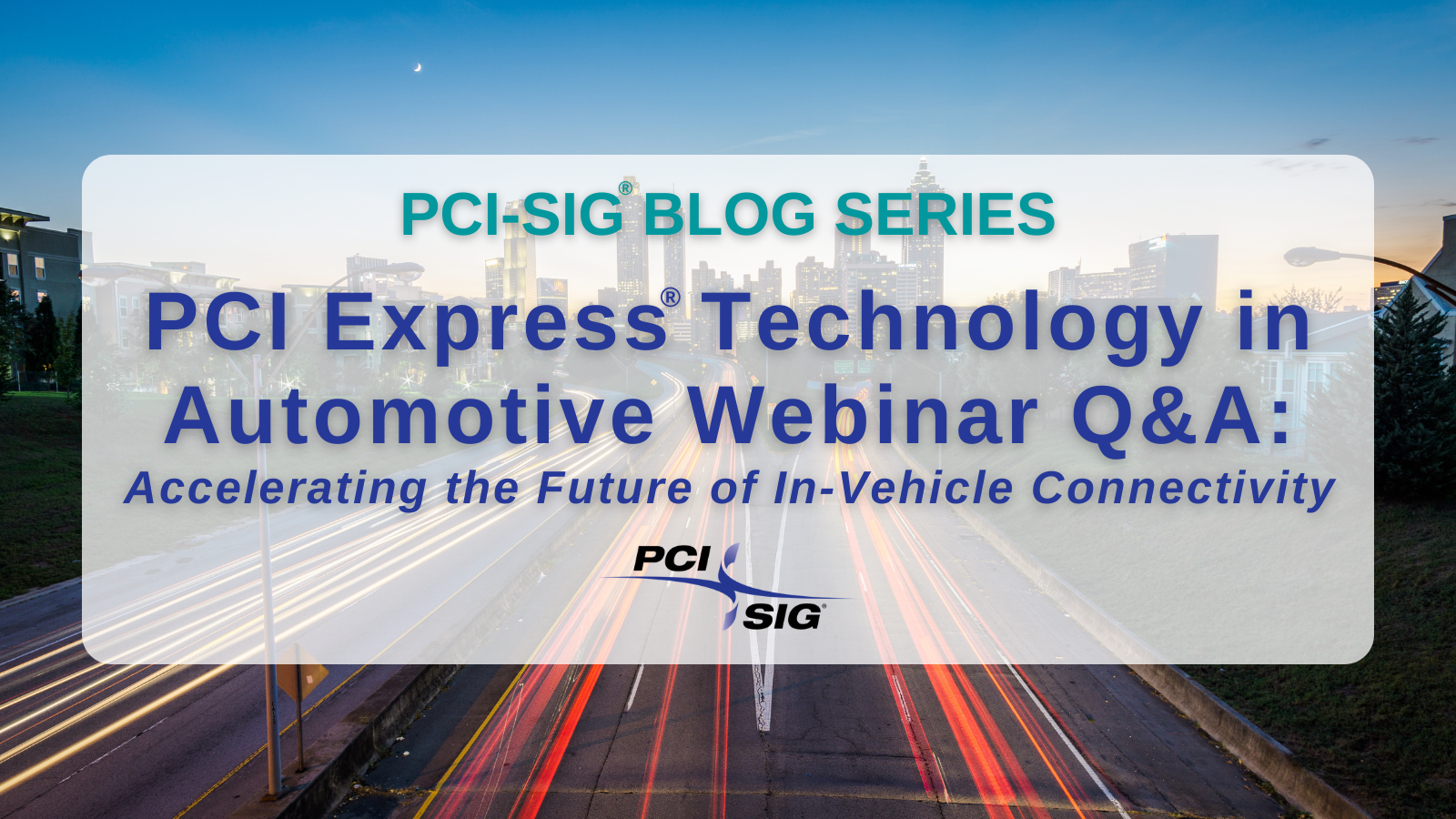Latest Posts

With the emergence of autonomous vehicles, AI-based advanced driver assistance systems (ADAS) and in-vehicle infotainment (IVI), today’s automobiles are becoming high-tech “servers on wheels.” PCI Express® (PCIe®) technology is expanding to become the interconnect of choice in automotive applicat
- Systems & Applications
- automotive
- PCIe
- PCI Express
- PCIe Retimer
- PCIe connectivity
- PCIe CEM
- PCIe Security
- PCIe low power
- PCI-SIG Automotive Taskforce.
Wow, 2020 sure has transformed the ways we connect, learn and innovate in industries around the world, and in our daily lives!
- Standards & Compliance
- PCI Express compliance
- PCI-SIG Integrators List
- PCIe 4.0
- PCIe 3.0
PCI Express® (PCIe®) technology is the most important high-speed serial bus in servers. Due to its high bandwidth and low latency characteristics, PCI Express architecture is widely used in various server interconnect scenarios, such as:
- Signal Integrity
- PCIe 5.0
- PCI Express 5.0
- PCIe CEM
- PCIe Channel Loss
PCI-SIG® has enabled PCI Express® (PCIe®) technology to be cost-effective and easy to implement by supporting multiple form factors for a variety of applications.
- Physical Form Factors
- PCIe 5.0
- PCI Express 5.0
- PCIe CEM
- PCIe Card Electromechanical Connector
The SD Association (SDA) recently announced SD Express, which adds the PCI Express® and NVMe™ interfaces to the SD interface. The PCIe® interface delivers transfer rates up to 985 megabytes per second (MB/s) and supports backward compatibility with existing SD hosts.
- Standards & Compliance
- PCI-SIG
- SD Association
- SD Express
- NVMe
- PCIe 3.0
- PCI Express 3.0
PCI Express® – also known as PCIe – used to get a bad rap for being power hungry on servers and PCs. But I’m happy to say that this is no longer the case. Are you aware that PCIe today is extremely power efficient with built-in low power features?
- Systems & Applications
- PCI-SIG
- PCI Express 3.0
- PCIe 3.0
- PCIe Latency
- PCIe low power
